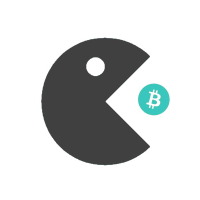Solana Made Simple
Intro – What is Solana?

In the ever-expanding realm of cryptocurrencies, Solana (SOL) has emerged as a prominent player. Designed to tackle the scalability and speed limitations of blockchain networks, Solana offers a unique proposition in the crypto space.
What is Solana?
Solana is a Layer 1 blockchain protocol, aiming to enhance scalability and transaction throughput. It utilizes a unique consensus mechanism called Proof of History (PoH) combined with Proof of Stake (PoS). Solana calls this Proof of History and Proof of Stake (PoH/PoS). PoH timestamps transactions, ordering events efficiently, while PoS ensures security through validators staking SOL tokens.
The 1-Minute Summary – 10 Points to Consider
- Solana is a Layer 1 blockchain designed for scalability and speed.
- It uses PoH/PoS consensus for efficient transaction validation.
- Maximum SOL token supply is capped at 489 million.
- SOL’s demand arises from staking, DeFi, and dApp usage.
- Pros: Scalability, fast confirmation, and robust technology.
- Cons: Centralization concerns, network overload risks.
- Solana’s scalability is attributed to the SFT protocol.
- Its sustainability is due to an energy-efficient consensus mechanism.
- SOL is used in DeFi protocols and decentralized applications.
- Investment in SOL should be approached cautiously, considering inherent risks.
The History and People Behind Solana
Solana was dreamt up in 2017 by Anatoly Yakovenko, a former engineer at Qualcomm. Supported by a team of talented individuals with backgrounds in technology, finance, and academia, Solana gained traction for its innovative approach to blockchain.
Solana Chart
Tokenomics
Supply: The maximum supply of SOL is capped at 489 million tokens.
Demand: Demand for SOL arises from various sources, including staking, DeFi protocols, and decentralized applications (dApps) built on the Solana network.
Distribution: SOL tokens were distributed through private and public sales, community incentives, and ongoing protocol development.
Valuation: The valuation of SOL is subject to market dynamics, influenced by factors like adoption, network growth, and broader market trends.
Pros
- Scalability: Solana is known for its high throughput and low transaction costs.
- Fast Confirmations: Transactions on Solana confirm in milliseconds, with a fast user experience.
- Robust Technology: the PoH/PoS mechanism and innovative architecture contribute to Solana’s reliability.
Cons
- Centralisation: there is an argument that Solana’s design sacrifices decentralisation for performance.
- Network Overload Risk: In extreme conditions, the network could face congestion, affecting transaction processing.
A Deeper Dive
Scalability
Solana employs an approach known as the Solana Time Forward (SFT) protocol, combining PoH with a horizontally scaled architecture, allowing for high transaction throughput.
Sustainability
Solana’s sustainability hinges on its energy-efficient consensus mechanism, PoH/PoS, which consumes considerably less energy compared to Proof of Work (PoW) networks like Bitcoin.
Use Cases: What is SOL Used For?
- Decentralized Finance (DeFi): SOL is used for yield farming, liquidity provision, and lending/borrowing in various DeFi applications on Solana.
- DApp Development: Developers utilize SOL to build decentralized applications on the network, fostering innovation in gaming, NFTs, and more.
Is Solana a Good Investment?
With the usual caveat about doing your own research on market conditions, and mapping out your personal risk tolerance financial goals. Solana’s potential for growth is good given its trajectory in the crypto space so far and would make a sensible portion of a balanced crypto portfolio. With its technological advancements and expanding ecosystem, its future is bright but remember that investment in cryptocurrencies carries inherent risks.
Summary
In a rapidly evolving crypto landscape, Solana stands out for its technological prowess and the potential to address scalability issues. Understanding its mechanisms and ecosystem can help navigate its promising but volatile market.
